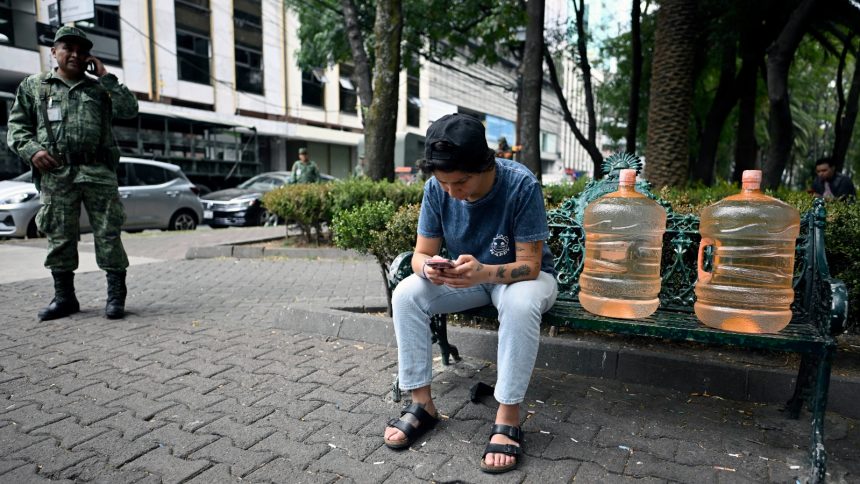In Mexico City, a growing number of residents are facing water shortages, with taps running dry for hours each day. When water does flow, it is often discolored and odorous. A former political leader is urging the public to prioritize essential actions for survival as the city’s key reservoirs are depleting. Meanwhile, in Bogotá, Colombia, 2,000 miles south, reservoir levels are also falling rapidly, leading to rotating water shutoffs imposed by the city government. The mayor has called on families to shower together and leave the city on weekends to reduce water usage. These challenges are exacerbated by a heat dome over Mexico causing record-breaking temperatures in Central America, leading to drought conditions due to El Niño.
Droughts in the region have intensified due to warmer winter temperatures and long-term aridification fueled by climate change. River systems in Mexico and Colombia have dried up, lowering water levels in reservoirs that supply their growing populations. Officials in both cities have warned of a potential “Day Zero” in June when the water systems could fail unless residents cut back on usage. Reflecting on Cape Town’s water crisis in 2018, both cities are striving to avoid a similar catastrophe.
Investments in improving aging infrastructure and securing water supplies are crucial for cities like Mexico City and Bogotá to build resilience against climate volatility. Lessons from Cape Town’s successful crisis management, which involved a cultural shift towards water conservation and enforcement of usage cuts, can guide these cities in their efforts. Trust in the government and public enthusiasm are key factors in implementing effective water conservation measures.
However, challenges such as water theft and leakage in Mexico City, lack of sustained enthusiasm in Bogotá, and the need for political will and public trust complicate the efforts to manage the water crisis. Learning from the aftermath of Cape Town’s crisis, cities worldwide can diversify their water sources, enforce conservation measures, and instill a culture of water saving to mitigate future water scarcity risks.






